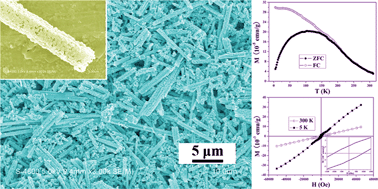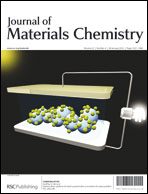As an important semiconductor, Cr2O3 exhibits many attractive properties and significant industrial applications. Nevertheless, it remains a challenge to develop a simple synthetic methodology for the fabrication of Cr2O3 1D nanostructures. In this paper, Cr2O3 sub-microtubes, consisting of nanoparticles, have been successfully prepared by the in situreduction of SrCrO4 nanorods in a microemulsion system. X-ray powder diffraction, scanning electron microscopy and transmission electron microscopy were employed to study the crystal structure and morphology of the products. Experiments showed that the solvent, reaction temperature and reaction time were critical for the formation of the Cr2O3 nanoparticle tubes. Magnetic properties of the products were investigated by the electron spin resonance and superconducting quantum interference device magnetometer. These magnetic results revealed a weak ferromagnetic behavior induced by the uncompensated surface spin below TB. The UV-Vis absorption spectrum showed three broad absorption peaks at 360, 450 and 600 nm, respectively. The nitrogen adsorption-desorption measurement was used to determine the surface area and pore size distribution of the as-obtained polycrystalline tubes. A possible growth mechanism for the Cr2O3 nanoparticle tubes was also proposed.

You have access to this article
 Please wait while we load your content...
Something went wrong. Try again?
Please wait while we load your content...
Something went wrong. Try again?


 Please wait while we load your content...
Please wait while we load your content...